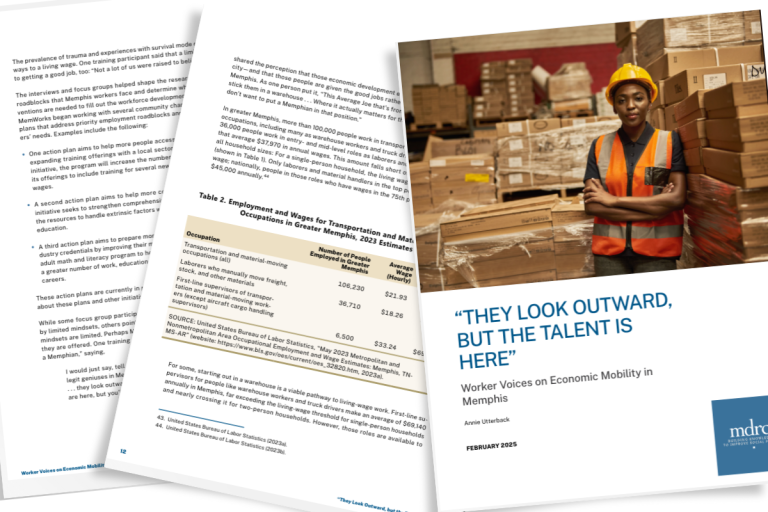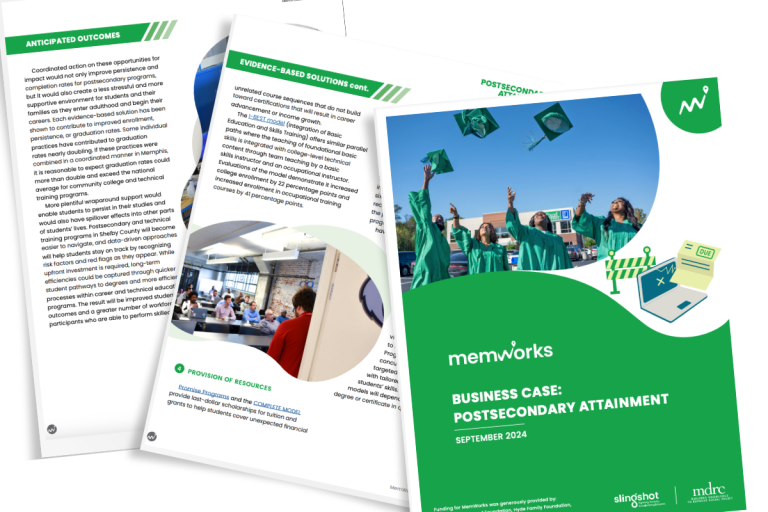At a time of year when many gather around full tables to celebrate all they are thankful for, we cannot forget that many in Memphis do not have this same kind of experience. Nearly 1 in 5 Memphians, that’s 250,000 people in the Memphis metro area, lack consistent access to enough food to live a healthy life.
In fact, Memphis has the highest rate (32 percent) of people living in food deserts among U.S. metropolitan areas with more than 1 million people. Food deserts are defined as neighborhoods with a large proportion of households with low incomes, inadequate access to transportation, and no food retailers providing fresh produce and healthy groceries within approximately one mile.
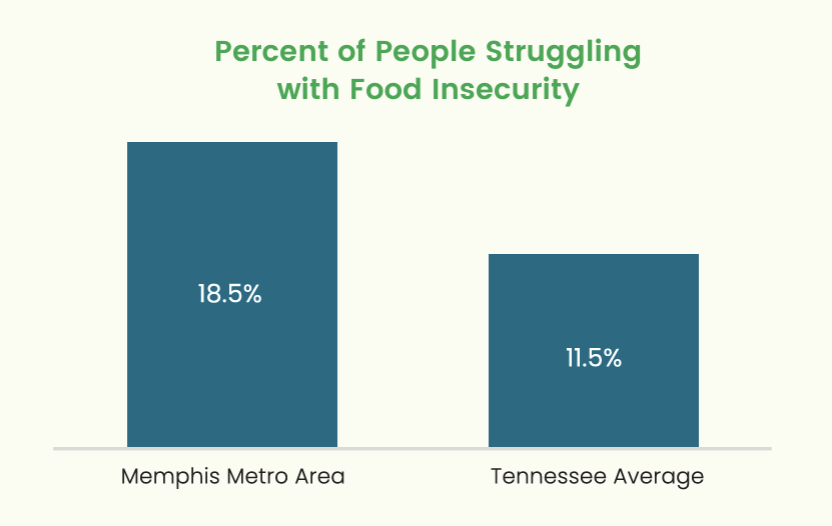
Food insecurity and housing instability make it nearly impossible to pursue workforce development services, technical training, and employment. Studies have found that food-insecure students are more than 40 percent less likely to graduate from college and food-insecure households were 60 to 70 percent more likely than food-secure households to experience job disruptions during the COVID pandemic.
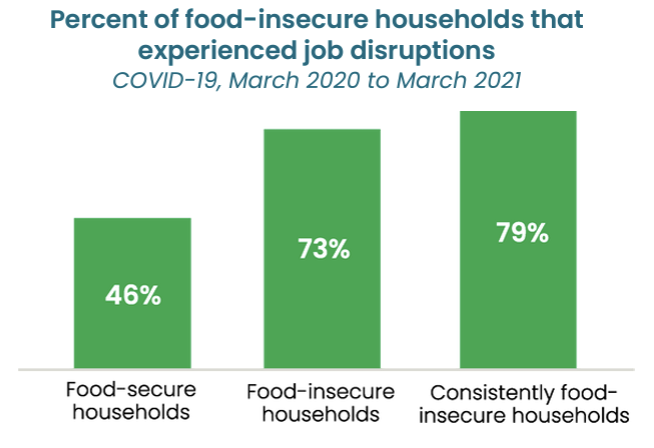
Almost 20 percent of households in Shelby County struggle with severe housing cost burden, which is spending 50+ percent of their income on housing. This is the highest rate for any county in Tennessee and 1.6x the state average.
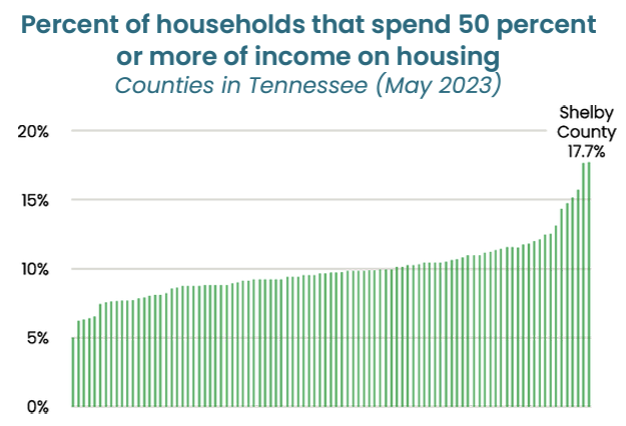
Between 2016 and 2019 Shelby County averaged more than 30,000 eviction filings annually with more than 20% of renters facing eviction. While job loss can lead to being evicted, being evicted can also lead to job loss. Following a forced move due to eviction, landlord foreclosure, or housing condemnation, workers earning low-wages are 11 to 22 percentage points more likely to be laid off.
Maslow’s Theory of Motivation
The basic premise of Maslow’s Hierarchy of Needs is that a person will not be motivated to become their best self if their basic needs are lacking. When more than 20 percent of Memphians lack stability with nutrition or housing, how can we expect them to become thriving participants in the local workforce ecosystem?

Signs Housing Might Be Improving
MLK50 recently reported that housing has become more available in Memphis over the past year, rebounding to nearly pre-pandemic levels after declining 40 percent during the height of COVID-19. The graph below was produced by MLK50.
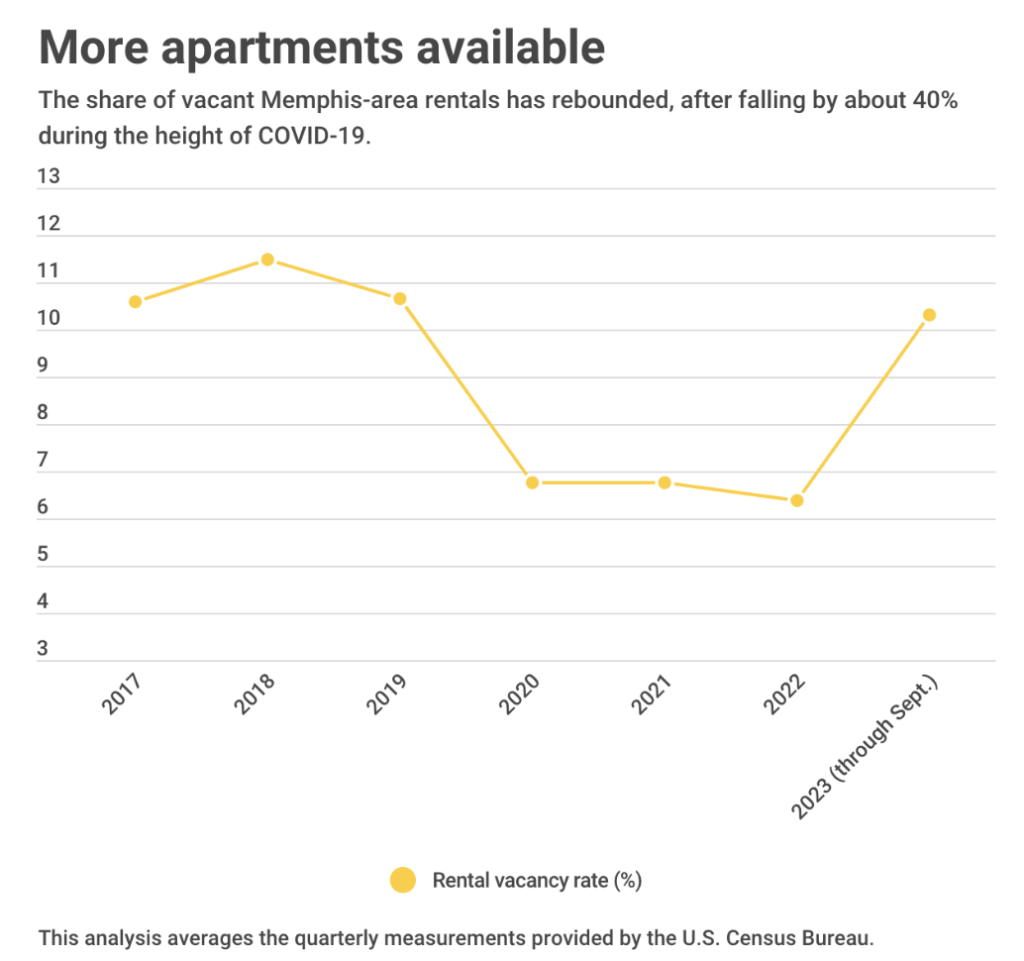
This rise in housing availability has led to the rent market stabilizing. While rent is still about 25 percent higher than it was in the pandemic, it has dropped 2 percent from where it was at this time last year. For more news about efforts for equitable housing in Memphis check out Jacob Steimer’s work through the MLK50 project.

